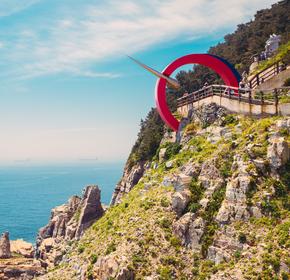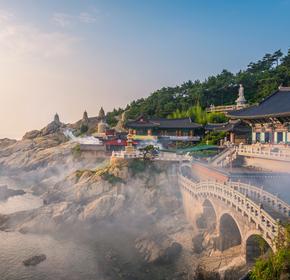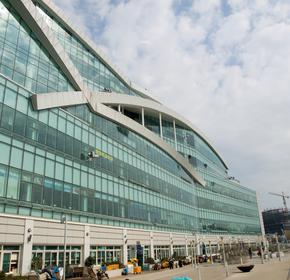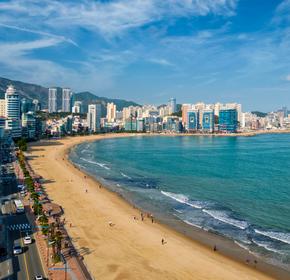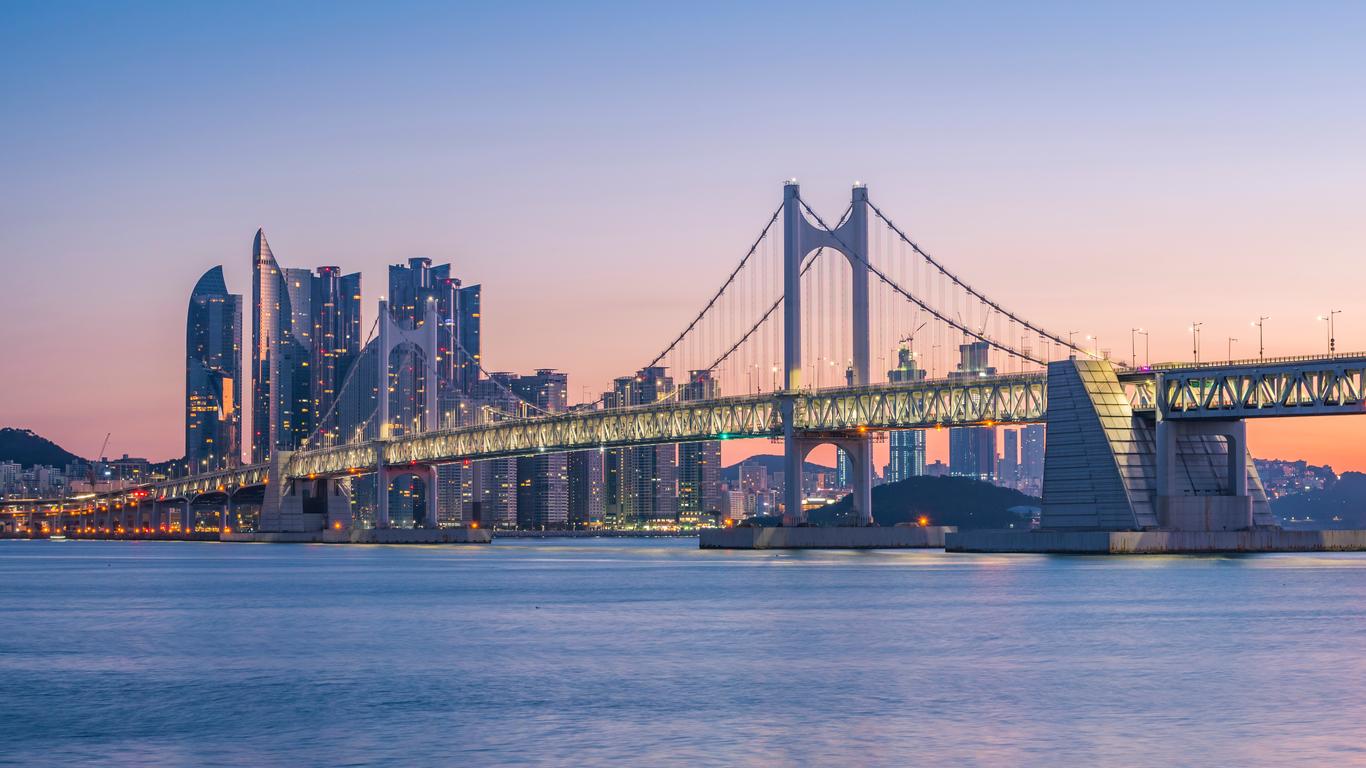
Busan travel guide
Busan Tourism | Busan Guide
You're Going to Love Busan
When Koreans and tourists alike need a relaxing getaway in South Korea, they head to Busan. The city is famous for its laid-back atmosphere, beaches, natural hot springs, and reserves, and great street eats, festivals, and shopping fill the pleasant days.
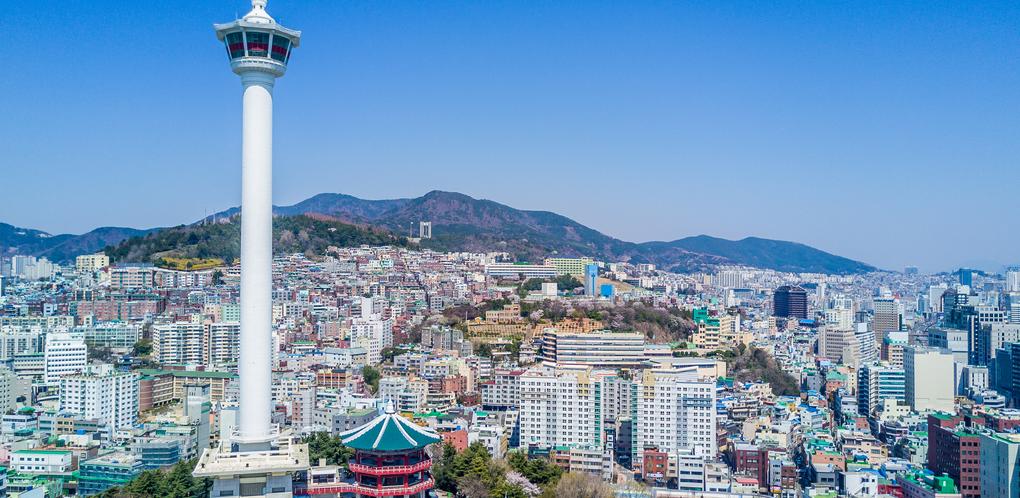
Top 5 Reasons to Visit Busan
1. Busan International Film Festival
Busan has become the "Cannes" of South Korea. Every October, the city hosts the world's best films, making it a great spot to star-watch.
2. Gamcheon, the Santorini of the East
The Gamcheon cultural village is nestled on a picturesque hillside, with narrow alleyways and colorful houses. Don't forget your camera!
3. Brilliant Beaches
Soak up the sun and paddle the water at beaches like Gwangalli, Haeundae, and Songjeong.
4. Historic Temples
Beautiful temples such as Haedong Yonggungsa, Seokbulsa, and Beomeosa dot the city and are often at the top of hills, so you're rewarded with serenity and gorgeous views.
5. Hot Springs and Natural Spas
Check out Hurshimchung Spa, one of the largest hot spring spas in Asia, featuring milk baths, hot steam saunas, pools, and an outdoor section.
What to do in Busan
1. Beomeosa Temple: A Nirvana in the Mountains
Nestled on the slopes of Mt. Geumjeongsan is Beomeosa Temple, the name of which translates to "Temple of the Heavenly Fish". The legend surrounding the mountain, about a golden well that never dries, makes for a sacred and ethereal atmosphere at the temple. The bright flora is one reason visitors make a beeline for the park year-round -- in the spring, lavender blossoms and in the fall, beautiful foliage sets the mountain ablaze. Hike to Godang Peak, the summit of Mt. Geumjeongsan, and you'll be rewarded with a spot far above the clouds. Take part in various Buddhist ceremonies once you arrive back down to earth.
2. Taejongdae Park: The Beauty of Busan
The Taejongdae Park is a recreation area in Busan known for its beautiful rock beach, historic lighthouses, sacred temples and the South Port Viewing Point (an observatory and an amusement park). Whether you spend the day scaling the cliffs of Yeongdo-gu or embark on a cruise ship from the port, Taejongdae Park has something for everyone. The rainy season brings with it dense foliage but, on a clear day, you can see Japan's Tsushima Island from the observatory. Make sure to dress in layers as it can get colder and wetter the further up you go.
3. Haeundae Beach: Sun, Sand & Surf in Busan
With its miles of white, sandy shores and red and white parasols lining the crowded beach in neat rows, the Haeundae Beach looks like a scene out of the Caribbean rather than South East Asia. Some of the most beautiful beaches are dotted around Korea. The Haeundae Beach is the most famous, with visitors coming to enjoy its perpetual sun, pleasant temperatures and water activities like water-skiing and parasailing. During the winter, Haeundae Beach has its own version of the "polar dip" that takes place.
4. Haedong Yonggung Temple: A Temple with a View
Experience the wisdom of Buddhism with views that are made for philosophical contemplation. Even temples are an opportunity to take in the natural beauty and scenic views of Busan. Dating back to the 1300s, this temple is, even today, a huge draw for visitors who are looking for various viewpoints of Busan. Gorgeous gilded pagodas, historic statues of the Chinese zodiac and turquoise waters make this Buddhist temple a real draw for visitors and locals alike.
5. Jagalchi Fish Market: Fresh and Friendly
Not quite a night market, not quite a bazaar: the Jagalchi Fish Market is the place to go for fresh and dried seafood, delicious local cuisine, rare food finds and a veritable treat for the five senses. There are stalls selling items like fish jerky, live octopus and crustaceans you may never have seen before. Once you're done chowing down on hot pot and fish soup, fried eel and tons of fresh kimchi on the 'restaurant' level of the market, get an up-close look at the fishing boats and take in the seaside views from the dock.
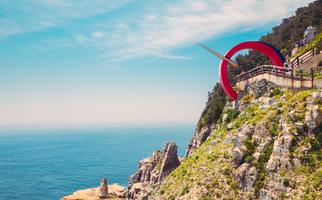
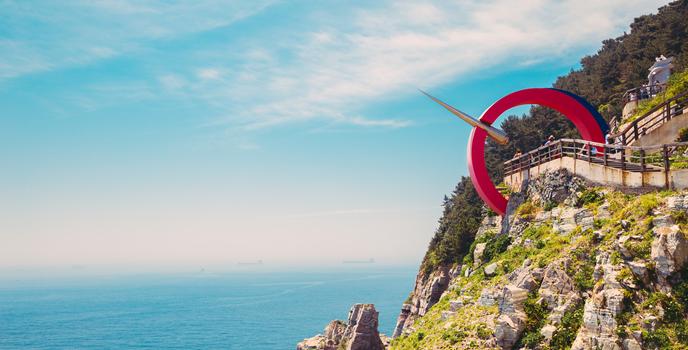
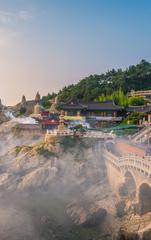
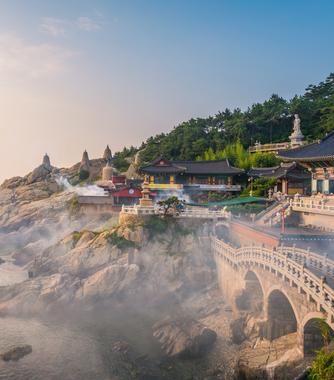
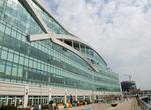

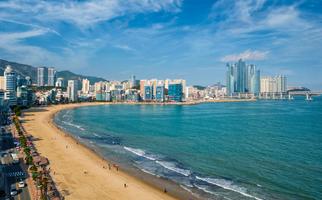
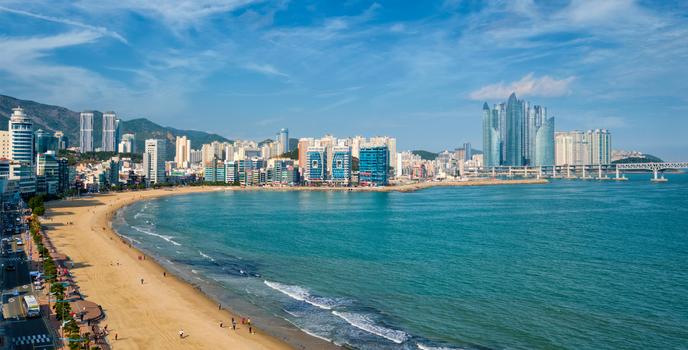
1. Beomeosa Temple: A Nirvana in the Mountains
Nestled on the slopes of Mt. Geumjeongsan is Beomeosa Temple, the name of which translates to "Temple of the Heavenly Fish". The legend surrounding the mountain, about a golden well that never dries, makes for a sacred and ethereal atmosphere at the temple. The bright flora is one reason visitors make a beeline for the park year-round -- in the spring, lavender blossoms and in the fall, beautiful foliage sets the mountain ablaze. Hike to Godang Peak, the summit of Mt. Geumjeongsan, and you'll be rewarded with a spot far above the clouds. Take part in various Buddhist ceremonies once you arrive back down to earth.
2. Taejongdae Park: The Beauty of Busan
The Taejongdae Park is a recreation area in Busan known for its beautiful rock beach, historic lighthouses, sacred temples and the South Port Viewing Point (an observatory and an amusement park). Whether you spend the day scaling the cliffs of Yeongdo-gu or embark on a cruise ship from the port, Taejongdae Park has something for everyone. The rainy season brings with it dense foliage but, on a clear day, you can see Japan's Tsushima Island from the observatory. Make sure to dress in layers as it can get colder and wetter the further up you go.
3. Haeundae Beach: Sun, Sand & Surf in Busan
With its miles of white, sandy shores and red and white parasols lining the crowded beach in neat rows, the Haeundae Beach looks like a scene out of the Caribbean rather than South East Asia. Some of the most beautiful beaches are dotted around Korea. The Haeundae Beach is the most famous, with visitors coming to enjoy its perpetual sun, pleasant temperatures and water activities like water-skiing and parasailing. During the winter, Haeundae Beach has its own version of the "polar dip" that takes place.
4. Haedong Yonggung Temple: A Temple with a View
Experience the wisdom of Buddhism with views that are made for philosophical contemplation. Even temples are an opportunity to take in the natural beauty and scenic views of Busan. Dating back to the 1300s, this temple is, even today, a huge draw for visitors who are looking for various viewpoints of Busan. Gorgeous gilded pagodas, historic statues of the Chinese zodiac and turquoise waters make this Buddhist temple a real draw for visitors and locals alike.
5. Jagalchi Fish Market: Fresh and Friendly
Not quite a night market, not quite a bazaar: the Jagalchi Fish Market is the place to go for fresh and dried seafood, delicious local cuisine, rare food finds and a veritable treat for the five senses. There are stalls selling items like fish jerky, live octopus and crustaceans you may never have seen before. Once you're done chowing down on hot pot and fish soup, fried eel and tons of fresh kimchi on the 'restaurant' level of the market, get an up-close look at the fishing boats and take in the seaside views from the dock.








Where to Eat in Busan
Tuck into delicious beef stews and side dishes for around ₩6000 at Seoul Kkakduggi. Enjoy an American-style breakfast for ₩15,000 at Eva's near Kyeongseong University. Don't miss out on the seafood fare at Ventanas Grill Steak and Seafood for ₩55,00 - ₩150,000.
When to visit Busan
Busan is best...all year long! The city enjoys a sub-tropical climate with a hot and humid summer. The fall and winter months are similarly mild, and the city rarely experiences snow.
How to Get to Busan
Plane
Gimhae International Airport (PUS) is located 13 miles west of Busan's city center. To get into town, take the Busan-Gimhae Light Rail, the local bus for ₩1,000, or a taxi for ₩15,000.
Train
Travelers arriving in Busan by train use the high speed KTX train system from Seoul, Daegu, and Daejeon. The journey usually takes 2.5 hours and costs ₩55,500.
Car
Three main highways connect Busan to other Korean cities. Take the Gyeongbu Expressway when coming in from Seoul via Daejeon and Daegu. Travelers coming in from Gwangju via Jinju and Sacheon can use the Namhae Expressway.
Bus
Express buses to Busan arrive at either Dongbu Intercity Bus Terminal from the north and east, or Seobu Intercity Bus Terminal from the west.
Airlines serving Busan
Where to stay in Busan
Haeundae-gu - located east of the city, this affluent beach area is most accessible for tourists and also has a great hiking trail at Jangsan Mountain.
Popular Neighborhoods in Busan
Nam-gu - this district is loaded with great with bars, cheap restaurants, and small clubs and pubs owing to the local university population.
Dongnae-gu - relaxing and chic, this neighborhood is home to the Hurshimchung Spa.
Where to stay in popular areas of Busan
Most booked hotels in Busan
How to Get Around Busan
Public Transportation
Getting around Busan using public transport is easiest when you have a Busan Hanaro Card, which can be used on everything, including taxis and local road tollways. It costs ₩6,000 and is rechargeable. Using it, fares are reduced to ₩990.
Taxi
Regular taxi fares start at ₩2800 and then ₩433 for every mile thereafter. Deluxe "mobeom" taxis are black and red and have a flat rate of ₩4,500 for the first 1.8 miles and then ₩775 per mile.
Car
Traveling around Busan by car is difficult if you're not used to the traffic and tight parking. Car rentals start at ₩85,988 for a compact 4-door from Avis.
The Cost of Living in Busan
Shopping Streets
The Lotte Department Store in Busan is incredibly popular, thanks to its linked hotel and cinema. Plan a visit to Nampodong, Busan's main shopping district.
Groceries and Other
Living costs in Busan are quite standard for the region. Milk is ₩2,480 per quart and a dozen eggs will run you around ₩3,442.
